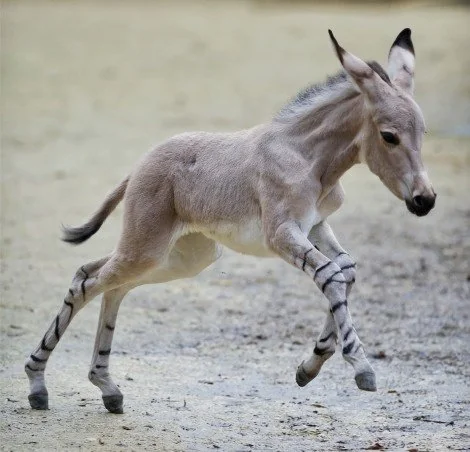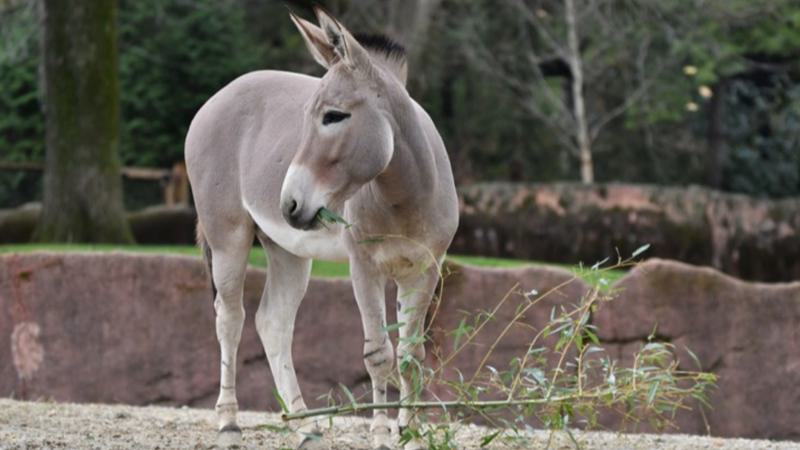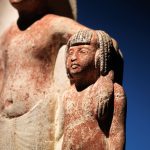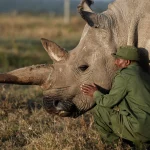The Last Survivors: How the Somali Wild Ass Faces Extinction and What We Can Do to Help

The Somali Wild Ass: A Masterpiece of Evolution
In the arid deserts and dry savannas of the Horn of Africa, one animal has learned to survive against the odds—the Somali wild ass. With its slim, graceful frame, large, dark eyes, and coat of sleek gray fur, it is a species of unparalleled beauty and resilience. Unlike domestic donkeys, the Somali wild ass possesses distinct features, including its white belly and the striking black-and-white horizontal stripes on its legs. These stripes are reminiscent of the wild ancestors of the donkey family, giving the animal a remarkable and elegant appearance that is a true marvel in the world of equids.
The Somali wild ass is not only an aesthetic wonder, but it also carries a remarkable evolutionary story. This species has adapted over millennia to survive in one of the most challenging environments on Earth. Unlike domestic horses and donkeys, the Somali wild ass’s body has evolved to withstand high temperatures, limited food, and water availability, as well as the rough terrain of the Horn of Africa’s harsh desert landscapes.
Evolutionary Adaptations of the Somali Wild Ass
The Somali wild ass’s physical traits are not just random occurrences but are a result of its evolutionary struggle. Its lighter body is ideal for heat dissipation, allowing it to manage the scorching temperatures of the region. This animal’s diet primarily consists of grasses and shrubs found in the sparse, semi-arid landscapes it inhabits, with its digestive system uniquely equipped to extract moisture and nutrients from the desert’s sparse vegetation. Its black-and-white striped legs are another fascinating feature that could help the animal avoid predators, providing a form of camouflage in the wild.
The Somali wild ass’s remarkable adaptability to life in extreme conditions is a reflection of how nature crafts perfect creatures for their environments. These evolutionary traits are what allowed the species to thrive for thousands of years, but in today’s world, those same traits are now facing unprecedented threats.

The Urgent Struggle for Survival: Why the Somali Wild Ass is in Danger
Despite their impressive adaptations, the Somali wild ass faces critical dangers in the modern world. The species has been pushed to the brink of extinction, with only a few hundred individuals left in the wild. These gentle creatures once roamed across much of the Horn of Africa, but their range has rapidly dwindled over the past century, primarily due to human interference.
Habitat Loss and Deforestation
The greatest threat to the Somali wild ass’s survival is habitat loss. Much of the Horn of Africa’s once-lush grasslands and shrublands have been replaced with farmland and settlements. As human populations grow, the land that was once home to the Somali wild ass is increasingly being converted for agriculture, development, and livestock grazing. This loss of habitat has fragmented the wild ass’s population, making it difficult for them to find suitable food sources and safe spaces to breed.
Moreover, deforestation in the region is a contributing factor to the degradation of the landscape. The trees that once provided shade and shelter for many desert species are rapidly disappearing, leaving the Somali wild ass with fewer places to retreat during the harshest months of the year. This destruction of their habitat has been exacerbated by climate change, which is causing further desertification and reducing the availability of vital resources like water and vegetation.
Poaching and Illegal Trade
In addition to habitat destruction, poaching remains one of the most severe threats to the Somali wild ass. Over the years, the species has been hunted for its valuable hide, meat, and bones. The Somali wild ass’s skin is highly sought after, often used to create high-quality leather products. While hunting for meat is also an issue, it is the trade of the animal’s pelts that has driven many populations of wild ass to near extinction.
Unfortunately, the illegal wildlife trade operates in the shadows, with animals like the Somali wild ass being exploited for their parts and products. Poaching has become a vicious cycle for many African wildlife species, and the Somali wild ass is no exception. Though international conservation laws prohibit such practices, enforcement in the region remains difficult due to a lack of resources and infrastructure to protect wildlife.

Human-Wildlife Conflict and Overgrazing
Human-wildlife conflict is another threat to the Somali wild ass’s survival. As humans continue to encroach on wildlife habitats, their livestock—such as goats and cattle—compete for the same scarce resources that the wild ass depends on. This competition for food has led to increased tensions between humans and the wild ass, often resulting in retaliatory killings of the animals.
In addition, overgrazing by domestic animals has contributed to the degradation of the landscape, further diminishing the already limited vegetation available for the Somali wild ass. As these precious resources become scarcer, the Somali wild ass is finding it increasingly difficult to survive in the wild, leading to reduced reproduction rates and a decline in population.
Conservation Efforts: A Glimmer of Hope
Although the Somali wild ass is critically endangered, there is hope. Conservationists and wildlife organizations across the globe are working tirelessly to protect the species and its habitats. Several organizations have already begun to take steps to ensure that the Somali wild ass does not disappear from the planet.
Protected Areas and Wildlife Reserves
One of the most important conservation strategies is the establishment of protected areas and wildlife reserves. These designated safe zones provide a refuge for the Somali wild ass, where it can roam freely without the constant threat of poaching or human encroachment. Reserves like the Gambella National Park in Ethiopia offer the wild ass protection in a natural environment that resembles their native habitats. In these areas, conservationists are working to restore the landscape, ensuring that the wild ass has access to the food and water sources it needs to survive.
Captive Breeding and Genetic Diversity
Another significant conservation strategy is the establishment of captive breeding programs. Zoos and wildlife parks around the world are helping to maintain genetic diversity in the Somali wild ass population, ensuring that the species has a future in both the wild and captivity. While captive breeding is not a long-term solution, it provides a safety net for the species. Genetic diversity is crucial to the health of any population, and these programs are designed to mitigate the risks posed by inbreeding.
Additionally, some captive breeding programs aim to reintroduce individuals back into the wild, though this is a highly complex process. Conservationists must carefully monitor these reintroductions, ensuring that the released animals can adapt to their new environment and thrive without facing further threats.

Involving Local Communities
Local communities have become critical players in the conservation efforts for the Somali wild ass. Community-based conservation programs are educating local people about the importance of protecting wildlife and encouraging them to participate in anti-poaching patrols and habitat restoration projects. Many local communities have become involved in managing wildlife reserves, ensuring that the conservation efforts are sustainable in the long run.
By involving communities in conservation, these programs are not only helping to protect the Somali wild ass but are also providing economic benefits to the local population. For example, wildlife tourism can create jobs and bring revenue to the region, creating an incentive for people to safeguard the animals and their habitats.
Why Protecting the Somali Wild Ass Matters
The Somali wild ass is more than just an endangered species; it is a symbol of the delicate balance between human development and environmental conservation. Its survival is tied to the health of the Horn of Africa’s deserts, which are among the most unique and ecologically important regions on Earth. By saving the Somali wild ass, we are not only protecting this remarkable species but also preserving the intricate ecosystems that support it.
The loss of the Somali wild ass would be a tragedy for the world, as it would mean the extinction of one of the most extraordinary animals to ever roam the Earth. It would also mark the loss of an entire ecosystem that supports a wealth of other species, many of which are just as endangered as the wild ass itself.











